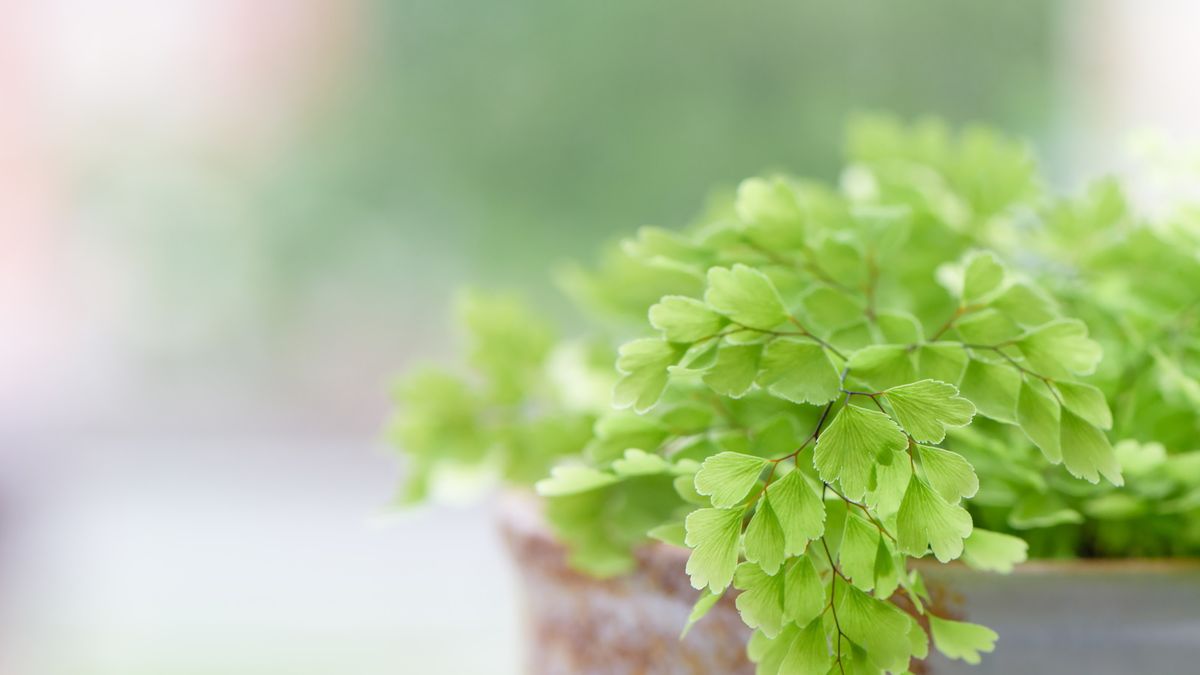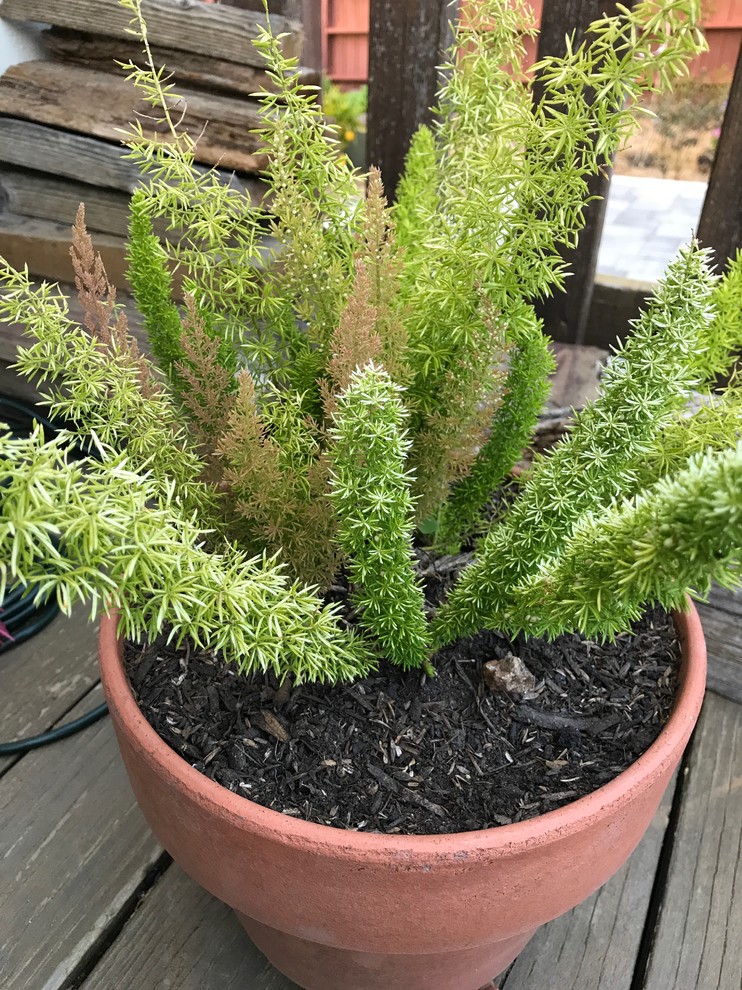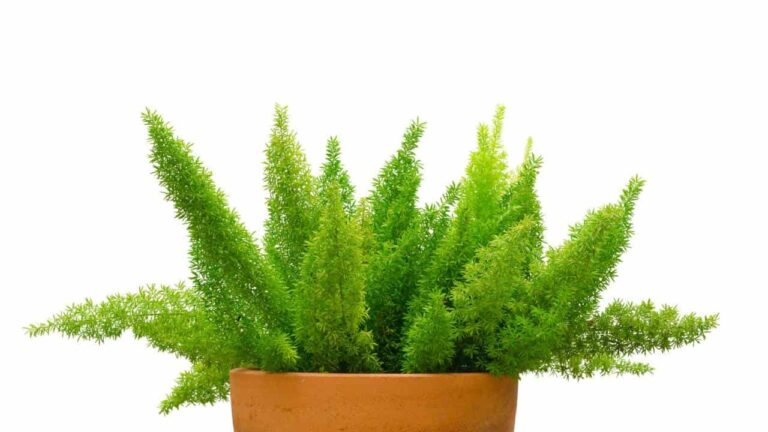Understanding Ferns
Ferns are a popular choice among gardeners for their lush, feathery foliage and unique reproduction process. This section delves into their characteristics and how they reproduce.
Characteristics of Ferns
Ferns are beloved shade plants for many gardeners. They are recognized for their airy, feathery foliage that adds a tropical feel to any garden. These plants are particularly known for thriving in partial shade and environments with moist, rich, organic, and slightly acidic soil (Gardening Know How). Hardy ferns, for instance, exhibit these specific requirements, although there is some variation in soil type preferences among different species.
A few notable characteristics of ferns include:
- Feathery Foliage: The leaves of ferns, also known as fronds, have a feathery, intricate pattern.
- Shade-loving: Most ferns thrive in environments with partial to full shade.
- Moisture Requirements: Adequate watering is crucial.
For gardeners interested in specific types of ferns, the Southern Shield Fern is recommended. It is a shade-loving, deer-resistant variety that offers evergreen foliage under suitable growing conditions.
Reproduction of Ferns
Unlike flowering plants that reproduce through seeds, ferns reproduce via spores. This unique reproductive strategy allows them to grow in a variety of environments. Here’s an overview of the fern reproduction process:
- Spore Production: Ferns produce spores, typically found on the undersides of their fronds. These spores are contained in structures called sporangia.
- Spore Dispersal: The spores are released and dispersed by wind or water to new locations.
- Germination: Once the spores land on a suitable substrate with adequate moisture and nutrients, they germinate into a gametophyte.
- Gametophyte Development: The gametophyte, a small and delicate structure, produces male and female reproductive organs.
- Fertilization: Fertilization occurs when sperm from the male organ swims to the female organ and fertilizes the eggs.
- New Fern Growth: The fertilized eggs develop into a new sporophyte, which grows into the fern plant.
For more information on how to care for your fern plant, visit our guide on fern plant propagation.
Understanding these characteristics and reproductive methods is crucial for proper fern plant care, especially in controlling their growth and ensuring a lush, green garden. If you are seeking additional resources, consider checking our articles on fern plant light requirements and fern plant watering.
Fern Temperature Tolerance
Ferns are versatile plants that display a wide range of temperature tolerances. Understanding the ideal temperature range and the effects of temperature extremes is crucial for successful fern care, especially for gardeners.
Ideal Temperature Range
The ideal temperature range for ferns can vary depending on the species. However, most ferns thrive in moderate temperatures that mimic their natural habitats.
-
Boston Ferns: These ferns flourish in temperatures ranging from 60°F to 75°F (15.6°C to 24°C). This range helps maintain their lush, green appearance.
-
Sword Ferns: Sword ferns prefer daytime temperatures between 60°F (15°C) and 70°F (21°C) and slightly cooler night temperatures between 50°F (10°C) and 60°F (15°C).
| Fern Type | Ideal Day Temperature | Ideal Night Temperature |
|---|---|---|
| Boston Fern | 60°F – 75°F | 60°F – 75°F |
| Sword Fern | 60°F – 70°F | 50°F – 60°F |
Gardening Know How suggests that cold hardiness can vary based on the climate zone, with some species even providing evergreen foliage in zones 7 and warmer.
Effects of Temperature Extremes
Ferns are sensitive to temperature extremes, which can significantly impact their health and growth.
- Cold Temperatures:
- Boston Ferns: Can tolerate temperatures as low as 50°F (10°C), but prolonged exposure can lead to stress and poor health (Flora Sense).
- Sword Ferns: Fronds can wilt, turn brown, or die at freezing temperatures. Frost can cause permanent damage or death to the plant (Cafe Planta).
- Hot Temperatures:
- Boston Ferns: Can withstand short periods as high as 95°F (35°C), but extended exposure to such temperatures can cause stress and damage (Flora Sense).
- Protection from extreme heat is essential, such as keeping ferns in shaded areas or providing humidity to replicate their natural environment.
| Fern Type | Tolerable Low Temperature | Tolerable High Temperature |
|---|---|---|
| Boston Fern | 50°F | 95°F |
| Sword Fern | 32°F (danger of frost) | 95°F |
To ensure the well-being of ferns, it is crucial to protect them from temperature extremes. For more detailed care tips, check out the section on fern plant care in winter.
By understanding these temperature tolerances, gardeners can provide optimal growing conditions for their ferns, whether they are keeping them indoors or outdoors.
Caring for Ferns Indoors
When cultivating ferns indoors, understanding their temperature needs is critical for maintaining health and vibrancy. In this section, we will explore vital temperature considerations and how to transition ferns indoors effectively.
Temperature Considerations
Ferns, such as Boston Ferns, thrive best in temperature ranges that mimic their natural habitat. Ideal indoor temperatures for Boston Ferns range from 60°F to 75°F (15.6°C to 24°C) (source). Maintaining this temperature range keeps them lush and green, while sudden changes in temperature can lead to stress and poor health.
| Stage | Optimal Temperature (°F) | Optimal Temperature (°C) |
|---|---|---|
| Active Growth | 60°F to 75°F | 15.6°C to 24°C |
| Dormancy | Above 55°F | Above 13°C |
Signs of temperature stress may include leaf curling, yellowing fronds, increased pest invasions, drooping, and shedding leaves. It’s essential to monitor these signs regularly and adjust conditions as necessary.
To avoid temperature extremes, keep ferns away from temperatures below 50°F (10°C) or above 90°F (32°C). These conditions can lead to droopy and unhealthy plants. For more insights on maintaining proper conditions, visit our guide on fern plant care in winter.
Transitioning Ferns Indoors
Transitioning ferns from an outdoor environment to an indoor setting requires careful planning to prevent shock and stress. The process can be broken down into manageable steps:
-
Gradual Transition: Move the fern indoors gradually to help it acclimate to the change in light and temperature. Start by placing the fern in a shaded outdoor area and then move it indoors for a few hours each day over a week.
-
Suitable Placement: Choose a location where the fern will receive indirect sunlight and maintain optimal temperature conditions. Avoid placing the fern near drafty windows, heaters, or air conditioning units.
-
Monitor and Adjust: Keep an eye on the fern’s appearance for signs of stress, such as yellowing leaves or leaf drop. Adjust the location or the environment if necessary.
-
Humidity Control: Indoor ferns benefit from higher humidity levels. Supplement ambient humidity by misting the fern regularly or placing a humidifier nearby.
-
Soil and Watering: Ensure the fern is in well-draining soil and maintain consistent watering practices. Check our article on fern plant watering for more details.
For gardeners looking for further information on indoor versus outdoor cultivation, our detailed guide on fern plant care outdoor provides helpful tips.
By following these steps and maintaining optimal temperature conditions, you can ensure your indoor ferns remain healthy and flourish. For additional resources, explore our content on fern plant light requirements and managing fern plant dying.
Adapting Ferns to Climate
Successfully growing ferns in various climates involves understanding the unique requirements of both indoor and outdoor cultivation. Factors such as temperature, humidity, and light play crucial roles in the health and growth of ferns.
Indoor vs. Outdoor Cultivation
Indoor Cultivation
Indoor cultivation offers the advantage of controlled conditions, which can significantly benefit plants with specific temperature and humidity needs. Ferns grown indoors can thrive year-round when provided with:
- Consistent Temperature: Ideal temperatures for ferns like the Sword fern range between 60°F (15°C) and 70°F (21°C) during the day, with slightly cooler temperatures at night.
- Humidity Control: Indoor ferns often require higher humidity levels. Placing a humidifier nearby or misting the plants can help maintain optimal conditions.
- Light Requirements: While ferns prefer indirect light, placing them near windows but away from direct sunlight ensures they receive sufficient light without risking leaf burn. For more information, explore our article on fern plant light requirements.
| Fern Type | Ideal Temperature (Day) | Ideal Temperature (Night) | Humidity |
|---|---|---|---|
| Sword Fern | 60-70°F (15-21°C) | 50-60°F (10-15°C) | High |
| Boston Fern | 65-75°F (18-24°C) | 55-65°F (13-18°C) | High |
| Southern Shield Fern | 60-75°F (15-24°C) | 50-60°F (10-15°C) | Moderate |
Outdoor Cultivation
Cultivating ferns outdoors requires careful consideration of the local climate. For example:
- Temperature Tolerance: Some ferns, like Boston ferns, can tolerate temperatures slightly outside their ideal range but should not be exposed to prolonged extremes (50°F/10°C to 95°F/35°C) (Flora Sense). Other types, like Southern Shield ferns, are hardy and can withstand cooler temperatures.
- Frost Protection: In regions with significant winter temperature drops, it is recommended to bring ferns indoors before the first frost. If this is not possible, covering them with burlap or frost cloth during cold spells can help protect them (Flora Sense).
- Placement: Ensuring that outdoor ferns are planted in shaded or partially shaded areas helps mimic their natural habitat and protects them from direct sun exposure.
Modifications for Different Climates
Warm Climates
In warmer regions, where temperatures frequently exceed the preferred range for ferns:
- Shade and Mulch: Providing ample shade and using mulch can help keep the soil cool and retain moisture.
- Adequate Watering: Ensuring consistent and adequate watering is crucial. However, it’s important to avoid waterlogging, which can lead to root rot.
- Monitoring for Heat Stress: Signs of heat stress include wilting and browning of the fronds. Regularly check your ferns and take necessary actions to mitigate heat damage.
Cold Climates
In colder zones:
- Indoor Transition: For plants like the Boston fern, transitioning indoors before the first frost is essential. Refer to our guide on fern plant care in winter for more details.
- Insulating Covers: Use insulating covers like burlap or frost cloth to shield the plants from freezing temperatures.
- Heat Sources: Using heat lamps or positioning ferns near heat vents can help maintain a stable temperature indoors during cold months.
By understanding the specific needs of ferns and making necessary adjustments, gardeners can successfully cultivate these lush, green plants both indoors and outdoors. For more detailed care tips and guides, visit our articles on fern plant care and fern plant propagation.




